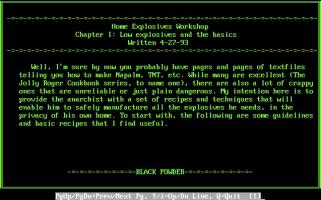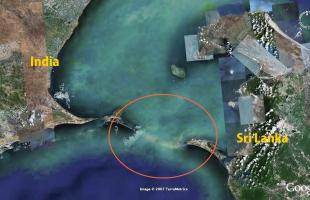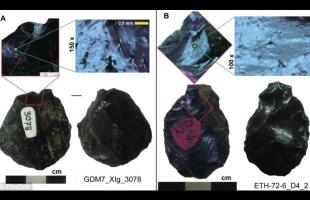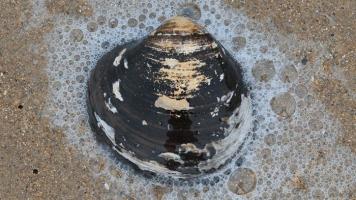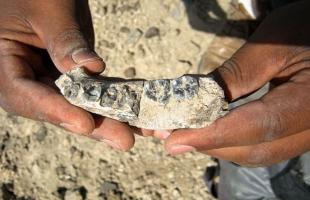DnA 3-10: Home Explosives Workshop Part III

Home Explosives workshop
Chapter III: High Explosives
Written 6-26-93
by -=Arclight=-
<Legal Bullshit>DISCLAIMER: I, Arclight, or anyone else working with DnA cannot be responsible for anything that happens as a result of using these recipes. This is dangerous shit! I advise you not to attempt any of these recipes until you feel totally confident with all the tools, techniques, etc involved. As before, very bad thing can happen. So if yo blow yourself up, burn down your house, or whatever, I will not be held responsible.
<End Legal Bullshit>
High Explosives
If you read the previous two articles, you should now know how to work with low explosives, build pipe bombs, produce smoke screens, and fabricate detonators. If you just tuned in, I strongly recommend getting a copy of the articles found in DnA #1 and #2, they provide essential background information. The past two articles have been leading up to this one. Here, we will talk about high explosives (See definitions from chapter I) and provide some simple, effective recipes.
To start with, high explosives are the type of explosives normally associated with incredibly powerful, spontaneous explosions. They include such items as TNT (Trinitrotoluene), Nitroglycerine, C-1,2,3,4 (RDX), and Mercury Fulminate. They are divided into two categories: Primary and secondary high explosives. Primary high explosives (See chapter II) are very sensitive to shock and heat, and can be detonated directly by a flame or sharp blow. This group includes mercury fulminate, TACC, etc. they are used in detonators to set off secondary high explosives. Secondary high explosives are the type that are used in quantity for demolitions and such, since they are relatively insensitive to heat and shock. TNT, RDX and others are in this category. Since they are not very sensitive to heat and shock, they must be detonated with a blasting cap containing primary high explosives. Secondary high explosives have a multitude of uses, from demolishing structures to building grenades and mines. they are by far the most important type of explosives for the anarchist.
Fabrication of high explosives
To begin with, find a clean work area with good ventilation, as toxic fumes are generated during several processes. Assemble all tools and materials and be sure to read and understand each recipe fully before attempting it. Once completed, finished explosives should be stored in a cool, dry place until ready to use. Explosives should only be produced for a specific mission, as they can become unstable from long term storage. Though this may seem like common sense, I'll repeat it nevertheless: Do not smoke, use heaters, or any type of flame near the work area! Non-sparking tools, such as those made of wood or glass should be used at all times. Also, it is a good idea to keep a bucket of icewater near at all times, as you can pour the reactants into the water to stop a reaction that is getting to violent. Now that that's out of the way, on to the recipes.
Plastic Explosive Filler
A plastic explosive filler material can be made using potassium chlorate and petroleum jelly. It will detonate as a high explosive, and can be used in a variety of demolitions projects, such as breaching barriers and constructing booby traps. It can be detonated with a #8 commercial blasting cap or a standard improvised cap.
Materials:
- Potassium Chlorate (Chemical supply store/mail order)
- Petroleum Jelly (Vaseline)
- Piece of Round Stick
- Wide bowl or pan (For Mixing ingredients)
Procedure:
- Spread the potassium chlorate crystals thinly over a hard surface. Using the round stick, crush them to a fine powder, similar in consistency to cake flour.
- Place 9 parts potassium chlorate powder and 1 part petroleum jelly in the mixing container. Mix ingredients by hand, kneading paste to an even consistency. (Gloves are recommended, as potassium chlorate can be a strong irritant)
Store this mixture in a waterproof container until ready to use. This explosive can be molded into blocks, shaped charges, etc.
Ammonium Nitrate/ Fuel Oil
Though it is technically a low explosive, it deserves mention here for a number of reasons. First, it is perhaps the cheapest/easiest "real" explosive to produce in quantity. The raw materials can be had for under $20 for 50 pounds of explosive, and it is relatively safe an stable to work with. it is capable of great destructive force, as seen in the World Trade Center bombing. This highly useful recipe must then, be a part of this series.
Materials:
- Ammonium Nitrate Fertilizer (Not less than 32% nitrogen, used to green up lawns)
- Fuel oil or Gasoline-Motor oil mix (1:1 ratio)
- One flat board (i.e. 36x36")
- 6" section of 2x4 board
- Bucket or other container for mixing ingredients
- Cup or similar measuring tool
Procedure:
- Spread the ammonium nitrate out on the board. Using the 2x4 piece, pulverize the ammonium nitrate granules into a powder the consistency of cake flour. This should take approx. 10 minutes. Proceed quickly to the next step, as these particles tend to take up moisture from the air.
- Mix one cup of fuel oil (Or 1:1 gasoline/oil mixture) with 16 cups of finely powdered ammonium nitrate. stir until ingredients are thoroughly mixed.
Store this explosive in a waterproof container until ready to use. This explosive can be detonated with a #8 commercial or standard improvised blasting cap. It is useful in large pipe-bombs, cratering charges, and anywhere a large quantity of readily made explosives is desired.
Urea Nitrate Explosive
This is a powerful high explosive that has the advantage of being made from Urine, one of the most widely available substances anywhere. It is useful for pipebombs and grenades.
Materials:
- Nitric Acid, 90% conc. (Chemical Supply Store) (sp. gr. 1.48)
- Urine
- 2 one gallon glass containers
- Filtering material (Paper towel or finely textured cloth)
- Aluminum Powder (Paint store, Chem. supply store) *optional*
- Heat Source
- Measuring cup or spoon
- Water
NOTE: Prepare mixture just before use.
Procedure:
- Boil 10 cups of urine to 1/10 of it's volume (1 cup).
- Filter the urine through a paper towel or fine cloth to remove impurities.
- Slowly add 1/3 cup nitric acid to the filtered urine, and let the mixture stand for 1 hour.
- Filter this mixture as in step 2. The crystals that will collect on the paper are the urea nitrate crystals.
- Wash the crystals 3 times by pouring water over them. This removes excess acid which could make them unstable.
- Remove the crystals from the filtering material and allow to dry thoroughly (Approx 16 hours)
Note: This explosive can be made more effective by mixing with fine alminum powder. Add 1 cup of aluminum powder to every four cups of urea nitrate.
This explosive may be detonated with a commercial #8 blasting cap or a standard improvised cap. It works best when detonated in a confined space, such as a pipe bomb or similar casing.
Conclusion
The recipes listed above should provide you with the means to accomplish most demolitions projects safely and with minimum effort. While these are not the most advanced explosives ever developed, they are easy to make, cheap, and effective. As with any dangerous project, the manufacture of high explosives must be done with the utmost caution. It is recommended that you read up on the subject beforehand, though it is not absolutely required. See chapter I and II for a list of information sources. One final note: Some of the materials listed here, particularly the ammonium nitrate, may be harder to obtain in the wake of the WTC bombing. Be careful and try not to arouse suspicion when buying this and other materials. That's all for now, so be sure to check out these articles, coming soon to a CRT near you: Plastic Explosives: Everything you wanted to know but weren't sure who to ask, Fuses/Detonators/Delays, Basic Demolitions, Glossary of Explosives info.
<POOF>









